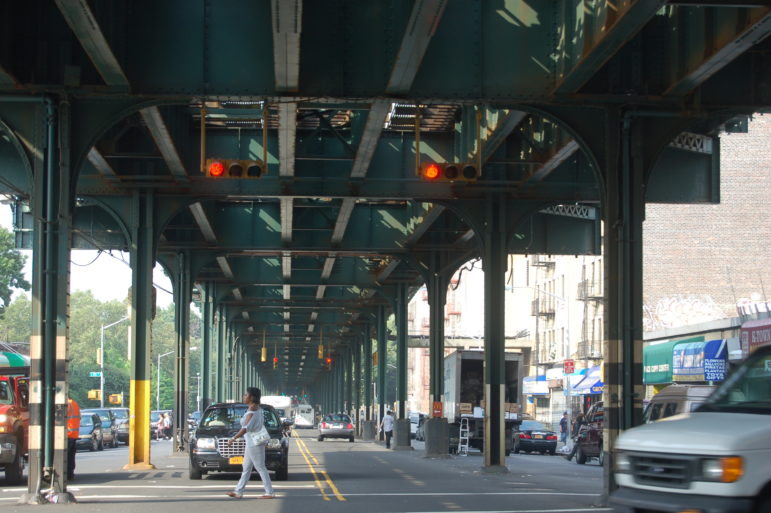
Daniel C
Under the 4 train along Jerome Avenue.
Monday ended the comment period on the draft scope for the Jerome Avenue rezoning. The scope, a document outlining the details of the proposed rezoning and explaining the methods the city will use to study the proposal’s potential environmental impacts, is a key part of the multi-step environmental review process required before the approval of any land use action. Likely dozens, if not hundreds, of stakeholders in the western Bronx submitted comments, which the city says it will take into account in the coming months.
The Bronx Coalition of Community Vision, however, is publicizing their 68-page comment, turning up the pressure on the city to conduct a detailed review—with the hopes of forcing the city to admit the proposal’s potential harm and change its plan.
A successful rezoning is not out of the question, the coalition believes, but is contingent upon the administration’s willingness to adopt an array of mitigation strategies.
“If the city takes these community goals to heart and adopts the policy proposals and practices that residents have developed over the course of almost two years, we believe that it will be possible for the Jerome Avenue rezoning to serve as an important example of responsible, equitable development,” the coalition writes.
Over the coming weeks, DCP will be reviewing all the comments they’ve received from stakeholders and responding to relevant issues. The agency notes that it appreciates all the feedback it receives and extended the commenting period to solicit greater input.
The coalition, a large alliance of community, faith, and labor groups, argues that the administration’s proposed rezoning of Jerome Avenue is not only in conflict with the majority of residents’ demands, but contradicts the administration’s own goal to foster diverse, livable neighborhoods.
“If ‘equity’ is a goal of the Housing New York plan, it is troubling that the city has selected only low-income communities of color for neighborhood-wide rezonings, with no guarantees that any significant share of the new housing will be affordable to local residents and no commitments that new developments will bring high-quality, career-track jobs,” the coalition writes.
Some of the coalition’s comments concern not so much the rezoning proposal itself, but the way the city’s environmental review process is studying its impacts. For instance, the coalition argues that the city’s past methods of assessing the effect of a rezoning on resident displacement are inadequate.
“Typically, the city responds to the community’s concerns about the rezoning by saying that gentrification and displacement are already occurring and by stating, in a conclusory manner, that the rezoning will help address these problems. This is not sufficient,” the coalition writes. “The city must analyze the extent to which displacement may be accelerated.”
The coalition argues that DCP underestimates how many lots are likely to be redeveloped after a rezoning, setting up an inaccurate basis for an analysis of the proposed rezoning’s impacts on displacement and other factors. It also asks the administration to predict how many buildings will adopt rent-restrictions in exchange for city subsidies, and urges the city to adopt a number of new strategies to encourage more housing at lower income levels, including tweaks to mandatory inclusionary housing.
The impact of the potential rezoning on Jerome Avenue’s cluster of auto-businesses, which coalition members say are a major source of well-paying jobs for immigrants in the community, is another source of concern. DCP says it aims to preserve auto-industry jobs while also fostering new residential and commercial development, but the coalition wants to know more details about the impact of the rezoning and those industrial retention policies.
The coalition also demands a more comprehensive assessment of the proposed rezoning’s impact on a variety of community resources, including schools, libraries, and transportation—and they also want an assessment of potential changes in racial, ethnic, and economic demographics.
There is frustration, too, about the community engagement process. The coalition wants to know how its policy suggestions, conveyed multiple times over the course of the past year, have been taken into consideration. In addition, they take issue with implications in the scope that in addition to the rezoning framework, the city has developed a “Jerome Avenue Neighborhood Plan” that comprehensively addresses community needs. City Planning shared draft recommendations for this plan in May, but the community wants to see a final version.








